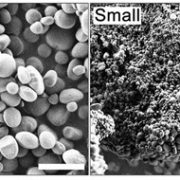
A novel starch granule size distribution in Arabidopsis thaliana is associated with differences in phosphorylation
Plant Science Research WeeklyDuring the day, starch is synthesized in the chloroplasts of leaves and stored as starch granules, before being degraded in the subsequent night. In Arabidopsis thaliana, starch granules are discoid in shape. Some mutants have round or elongated granules, yet all these mutants have a homogenous starch…
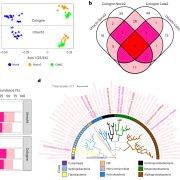
Shooting yourself in the foot: Obligate biotrophic pathogen induces protective microbiome in Arabidopsis
Plant Science Research WeeklyObligate plant pathogens cannot survive without their host plant. Therefore, understanding how the plant and its microbiome respond to the obligate biotrophs has real challenges in making sure that the response that is being monitored is not an artifact of the experimental step up. A recent study by…
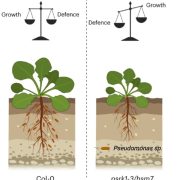
PSKR1 balances the plant growth–defence trade-off in the rhizosphere microbiome
Plant Science Research WeeklyPlants are colonized by numerous beneficial microorganisms in the rhizosphere, including Pseudomonas fluorescens, that provide benefits including nutrient acquisition and pathogen protection. Host plants must tune their immune systems to restrict microbial overgrowth, while avoiding overstimulation of…

PLANTdataHUB- One plant research data platform to rule them all
Plant Science Research WeeklyResearch Data Management for plant scientists just got easier with the newly released PLANTdataHub. In this platform, you can register your data which will be organized in Annotated Research Contexts (ARCs). ARCS are Findable Accessible Interoperable Reproducible (FAIR) digital Objects which are the…

Plant Science Research Weekly: January 19, 2024
WWR Full PostReview. Milestones in understanding phosphorus uptake, transport, sensing, use, and signaling
Phosphorus (P) is an essential nutrient and critical component of nucleic acids, phospholipids, and other molecules. Yang et al. provide a historical (since 1996) overview of the processes controlling its…
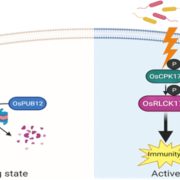
A calcium-dependent protein kinase and an E3 ubiquitin ligase fine-tune rice immunity
The Plant Cell: In a NutshellA calcium-dependent protein kinase and an E3 ubiquitin ligase fine-tune rice immunity
Mou et al. explore the growth–defense trade-off in rice.
https://doi.org/10.1093/plcell/koad265
Baohui Mou, Jiyang Wang, and Wenxian Sun
China Agricultural University
Background: Plants need to keep…
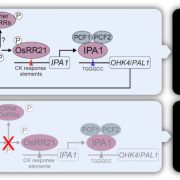
Cytokinin signaling determines rice panicle size
The Plant Cell: In a NutshellChun, Fang, Savelieva, Lomin et al. explore the mechanism by which cytokinin signaling influences the size of rice panicle.
https://doi.org/10.1093/plcell/koad257
By Yan Chun (淳雁), and Xueyong Li (李学勇)
National Key Facility for Crop Gene Resources and Genetic Improvement, Institute…

Go your own way: An Interview with Plant Physiology Monitoring Editor Jurriaan Ton, PhD
Blog, Editor ProfilesBy Aida Maric, PhD, Plant Physiology Assistant Features Editor
Jurriaan Ton is Professor of Plant Environmental Signalling at the University of Sheffield in UK. He obtained his PhD at the Utrecht University in the Netherlands, where he studied plant-microbiome interaction in the lab of Prof. Corné…

An Interview with Dr. Joanna Porankiewicz-Asplund on the 5th Anniversary of The Global Plant Science Events Calendar
Blog, CommunityThe Global Plant Science Events Calendar turns five years old this year. This plant community resource is the most comprehensive list of worldwide events for the plant community.
Rachel Belsky, ASPB Peer Review & Content Coordinator, sat down with Dr. Joanna Porankiewicz-Asplund, Technical Support…

